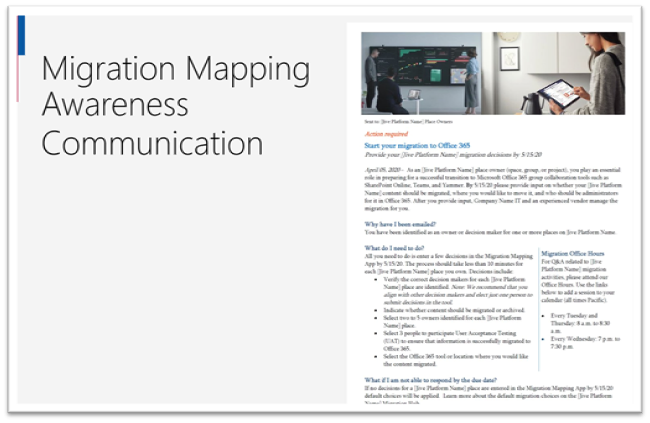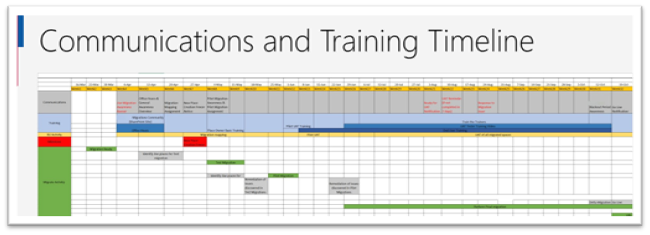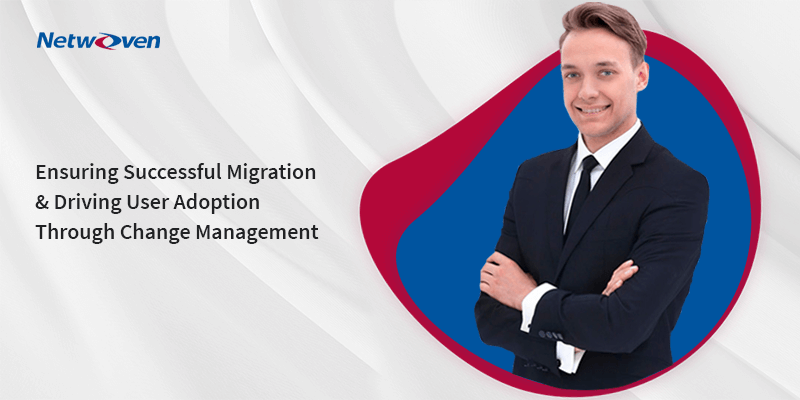Introduction:
Migrating from an existing platform to a new one often presents a momentous challenge for the technical teams involved, but an even bigger challenge for end-users, especially if the older system has been around for many years. Business users tend to have their hands full with their day-to-day job processes and asking them to learn an entirely new system while juggling their daily tasks tends to be met with some resistance. While some organizations have the luxury of being able to dictate technology changes without regard for the end-user experience, most modern companies know that to minimize disruption to the business and maximize Return on Investment on technology investments, an effective change management plan needs to be in place throughout all stages of the project.
Whether your company calls it Adoption & Change Management (ACM), Organizational Change Management (OCM), Training & Change Management (TCM), or any other acronym, the goal is always to ensure business continuity and drive user adoption throughout significant events and technology shifts
The Role of Change Management in a Migration Project
Regardless of which platform you are migrating from, the impact on end-users will always be present. Jive is often utilized as a main corporate Intranet, social interaction platform, and as a communications forum, with a reach that affects every user. The good news is that Microsoft 365 provides a functional equivalent for most of Jive’s capabilities if you choose to migrate from Jive to Microsoft 365. The even better news is that Microsoft 365 also offers a host of features that go beyond what Jive has to offer! By focusing on three main aspects of Change Management, Communication, Training, and Promotion, you can ensure that the migration project will not only be a success on a technical level but also in driving user adoption for the present and future.
Communication
The most important facet of Change Management is Communication. Effective communication ensures that all users will be informed beforehand, and properly prepared for all changes to come. The last thing you ever want to do is surprise people with a sudden and jarring change to what they have known for a long time and grown accustomed to. Whenever we run any migration project, we work together with the client’s change management team from the very onset of the engagement and start by putting together a definitive Communications Schedule that details not only the timing of all broadcast communications, but also all the notifications to be sent out to individuals who are participating in migration mapping, testing, or any other activities related to specific places being migrated.

Training
The Microsoft 365 platform provides a significantly unique experience for both administrative and end-users and requires a robust training regimen for everyone to drive successful adoption. Just as with the communications piece, we work diligently with our clients to develop a full-fledged training plan and schedule that provides multiple levels, media, and open-office opportunities for our staff, along with the client’s SMEs, to provide ad-hoc, on-demand, and scheduled learning opportunities for all levels of users within the M365 environment. This includes creating customized videos that show our client’s actual environment, as opposed to generic tenants that may not fully reflect the experience that users can expect when watching videos created for general consumption. We have also found significant value in holding open office sessions that allow site owners to bring their questions to the table and receive answers that address their specific questions, which often leads to providing value to other site owners who may be experiencing similar issues.

Promotion
One of the biggest factors in driving adoption of the Microsoft 365 platform is making users aware of the numerous capabilities that the included business applications can provide. From the versatile custom lists in SharePoint to the powerful functions available within the Power Platform, we have found that most of our customers are unaware of just how much their business users can benefit from these apps without requiring assistance from the IT department. The next logical step after a successful migration to the platform is to utilize the full scope of M365’s functions through a mixture of training, collaboration, and demonstration, which we refer to as Business Process Innovation, which works to empower users with the ability to increase their productivity and efficiency by automating and digitizing their workloads that may have previously required mind-numbing manual processes, and error-prone methodologies.
We employ a method that involves a mixture of hands-on training and the creation of digital social communities for experience sharing that enables power users and end users alike to take full advantage of the tools available to them that require little-to-no IT support to enhance their daily work tasks, which in turn leads to greater adoption of the entire Microsoft 365 platform.
Conclusion:
We hope you found this blog useful in understanding how to ensure a successful migration & leverage Change Management to drive effective user adoption. Change Management will help you explore new levels of efficiency, collaboration, and increased productivity. Please reach out to us so that we can put our decades of experience in Microsoft 365 and Change Management to work for your organization’s Digital Transformation.






















